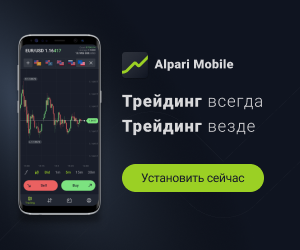
Most traders have their favorite markets. In many cases, though, the same markets you excel in with interday trading, you may perish in with intraday trading. It's vital, then, to know how to pick good markets for your day-trading strategies. But one market can't be a panacea for all day-trading problems. It's still important to know what you trade, warns William Darby, president and chief executive officer of Darby Trading Consultants in White Plains. X.Y. "Professional traders often find they have a special knack for some markets, whether it's from past job experience, training, whatever. Some people just perform better in certain markets." Still, if a market doesn't have a wide price range as well as considerable volatility, liquidity and consistency Darby says, it can be a bust for day-trading no matter how well you know it.
Range of opportunity Barring options, it's hard to make money trading a flat market. This stands for any type of trader — short term, long term. etc. — but it's particularly true for day-traders. By definition, day-traders liquidate any open positions at the close: they don't have the luxury of waiting to see if tomorrow brings the expected price move. (They also avoid any adverse overnight moves.) So if a market doesn't exhibit a healthy range of daily prices, forget about day-trading it. "One of the necessities in day-trading is having markets that move enough. If mere's no range, men the prospects for day-trading are just terrible." says Ralph Greenberg. president of Exel Inc.. a system designer in New York.
It's even better to trade markets with wide ranges within a longer-trending market, he says. Trading when ranges widen, particularly in the direction of an intraday trend, can improve a day-trader's chances. Greenberg likens mis to a surfer catching a much better wave if the wave is going with the tide rather than against it. How large the daily range must be depends on your profit objectives. One guide is using the average daily costs of trading as an absolute minimum. But many markets are tradable using mis bottom-line criterion. So you should look foi the market that has the largest price range: it should be the best candidate for day-trading.
To compare the typical daily price ranges of markets, you need to standardize their ranges. To do mis. find each market's average point range and multiply that by the dollar value of each point. For example, from Jan. 1. 1997. to Feb. 28. 1997, June S&P 500 futures had an average daily range of 1.098 basis points. At S5 per point, mat's an average daily dollar range of S5.490. (See "Brief glance." below, for a particularly strong move in the S&P 500.) The S&P 500 obviously has a considerable amount of profit potential — or loss potential, as Greenberg points out — for the dav-trader.
Near the other end of die profit scale are Eurodollar futures. From Jan. 1. 1997. to Feb. 2S. 1997, die June contract had a daily range of six basis points. Widi each one-point move worm S25. me average daily dollar range of Eurodollars is S150. But average daily range merely represents me maximum profit potential of an average day making two trades — buying at me top. selling at die bottom, not always a realistic scenario. But mere's more to consider, which can improve a market's prospects, man just average daily range. Specifically, mere's die simple fact traders can make more man two trades a day. Knowing mat. it's ob\ious volatility, as well as daily range, is an important consideration for day-traders.
Take my trade...please Liquidity is die most difficult variable to measure, traders and analysts say. Volume and open interest are quantifiable aspects of a market that measure its activity and level of participation, but other aspects, such as activity of the locals and the intraday amount of commercial participation, are hard to put a finger on. particularly for the upstairs trader.
Some traders contend certain markets, such as energies, precious metals and some softs, are dominated by groups of floor traders who make it difficult for upstairs traders to get decent fills intraday. Floor traders, of course, don't have a vendetta against oflf-floor traders, they simply are looking out for their own interests. Other attributes of such markets, (for example, low open interest and choppy volume) compound the problem of getting good fills. "A thinly traded market can be put out of whack by big locals on the floor [or] by large commercial orders coming in." Eberhart says.
Pugh says day-trading only the markets and contract months with the highest open interest is vital "to get the best liquidity." Volume, of course, also is important. When volume is steadily rising and is high relative to its average, it indicates a market may be ripe for day-trading. But also be aware of markets where volume spikes suddenly. Tomorrow may not be as liquid because such spikes often are do to some short-term fundamental factor. Pugh says. Another factor that often overrides most measures of liquidity is your broker. The point of liquidity is to get good fills, and your broker often has more to do with this than the market. "Your trading system doesn't have a whole lot of value if you can't get your order down to the floor fast enough." Eberhart says.
Greenberg says short of trial and error in picking the most efficient broker, the day-trader can be sure he calls his order directly to the floor instead of to an order desk. "Most houses take the order at an order desk." Greenberg says. "First you have to wait for them to answer the phone, then take your account number, then repeat the order back to you. then send the order down to the floor, which prints out and must be ran to the ring [pit]."
| Прикрепленный файл | Размер |
|---|---|
| Day_Traders_Manual_from_Futures_Magazine.zip | 1019.26 кб |

